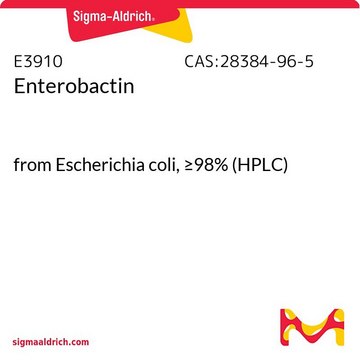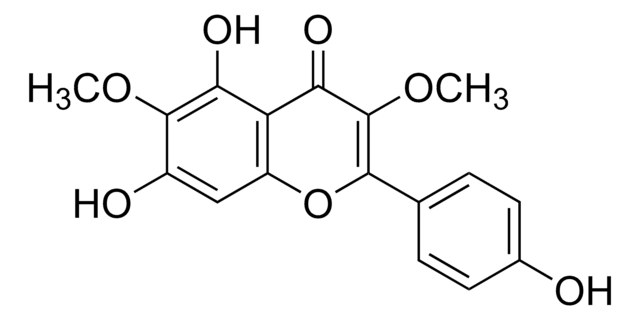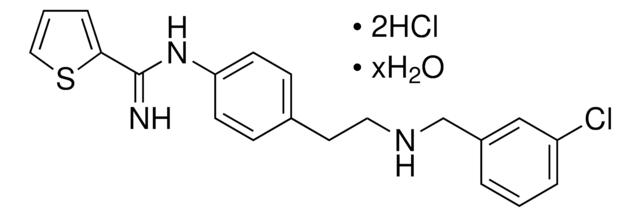SMB00708
Lysobactin
≥97% (HPLC)
Synonyme(s) :
Katanosin B, L-Serine, D-leucyl-L-leucyl-(βR)-β-hydroxy-L-phenylalanyl-(3R)-3-hydroxy-L-leucyl-L-leucyl-D-arginyl-L-isoleucyl-L-allothreonylglycyl-(3S)-3-hydroxy-L-asparaginyl-, (11→3)-lactone
About This Item
Produits recommandés
Niveau de qualité
Essai
≥97% (HPLC)
Forme
powder
Composition
counterion (acetate salt)
Solubilité
DMSO: 1 mg/mL
Spectre d'activité de l'antibiotique
Gram-negative bacteria
Gram-positive bacteria
Mode d’action
cell wall synthesis | interferes
Température de stockage
−20°C
Actions biochimiques/physiologiques
The mechanism of action of lysobactin is attributed to its interaction with lipid I and lipid II in the bacterial cell wall. Lysobactin forms a 1:1 complex with lipid I and lipid II causing interference in peptidoglycan synthesis which is essential for bacterial viability. Furthermore, lysobactin was not found to be hemolytic at concentrations above its MIC.
Code de la classe de stockage
11 - Combustible Solids
Classe de danger pour l'eau (WGK)
WGK 3
Point d'éclair (°F)
Not applicable
Point d'éclair (°C)
Not applicable
Faites votre choix parmi les versions les plus récentes :
Certificats d'analyse (COA)
Vous ne trouvez pas la bonne version ?
Si vous avez besoin d'une version particulière, vous pouvez rechercher un certificat spécifique par le numéro de lot.
Déjà en possession de ce produit ?
Retrouvez la documentation relative aux produits que vous avez récemment achetés dans la Bibliothèque de documents.
Les clients ont également consulté
Notre équipe de scientifiques dispose d'une expérience dans tous les secteurs de la recherche, notamment en sciences de la vie, science des matériaux, synthèse chimique, chromatographie, analyse et dans de nombreux autres domaines..
Contacter notre Service technique











